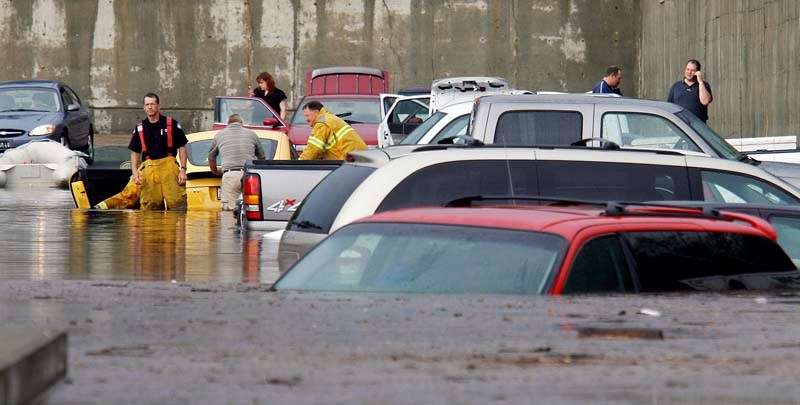Any potential disaster that might strike St. Albert would trigger a sequence of events designed to properly manage the emergency, says the city's fire chief and director of emergency management.
With the flooding in southern Alberta fresh in everyone's minds, Ray Richards says everyone is thinking more about emergency preparedness, but the likelihood of something that significant isn't great.
“St. Albert is pretty fortunate over the years,” Richards said. “We're in a pretty safe area. We've got a railway and we've got some highways. We've got a couple of sour gas wells to the west but for the most part, outside of extreme weather, we're in pretty good shape.”
The potential for a natural disaster, however, still exists which is why the city has its emergency response bylaw and emergency response plan. That bylaw, which mirrors the province's own legislation, gives the mayor and director of emergency management extraordinary powers that Richards said are necessary to mitigate damage and harm.
“It's essential because every minute counts,” Richards said.
The mayor is vested with the authority to, if necessary, unilaterally declare a state of emergency. Such a declaration starts the process. The mayor must promptly notify the province of the declaration as well as notifying the people most affected by the declaration, Richards said.
The emergency operations centre (EOC), located at Fire Hall 3 on Giroux Road, would also be set up and staffed. If the fire hall was somehow at risk, the back-up location is the east boardroom at St. Albert Place. The city's emergency management team, consisting of the RCMP inspector, general manager of planning and engineering, city manager and the Sturgeon Community Hospital's physician in charge of emergency services, would be immediately convened.
The EOC would operate as the nerve centre, managing resources and directing the actions of the emergency responders on scene.
“It could be for half a day or it could be for three or four weeks,” Richards said. “Calgary is going to have theirs set up for weeks because they are now in the recovery phase.”
Once the state of emergency is declared, the emergency management team (called the emergency response organization in the bylaw) is granted powers that would normally be considered intrusive and sweeping. On the order of the team, authorities can evict or displace people, destroy buildings, enter buildings without a warrant, restrict travel and even fix prices. It can also spend money on necessary supplies, commandeer equipment and authorize any person it chooses to help in the situation.
“It's imperative you give those powers to people. What happened is that when they've been used, they have been used reasonably,” Richards said.
But Richards pointed St. Albert could only manage a large-scale disaster on its own for a few days. After that period it would require outside assistance from other municipalities and agencies.
As for the public, Richards said the expectations are straightforward – the public should be listening to the media and following any instructions, such as preparing for an evacuation or avoiding an affected area. They should also have a 72-hour kit prepared in the event responders cannot get to them immediately.
“Seventy-two hours is the average of all the emergences in Canada bundled out and averaged out,” Richards said.
For more information, visit www.stalbert.ca/beprepared.




